FRANCISCO CESPEDES / “Bésame Mucho”
It was in Mexico, 1940. She was a teenager: 15 years old. Had not yet been kissed but wrote one of the world’s most popular kissing songs. Who was she? Consuelo Velázquez. What was the song? "Bésame Mucho."
Bésame = kiss me. Mucho = a lot. It’s Spanish but it’s been translated into a ton of languages and even sung in Spanish as if it was an English song and eventually in English (with lyrics by Sunny Skylar).
This week we consider one of the greatest love songs of all time.
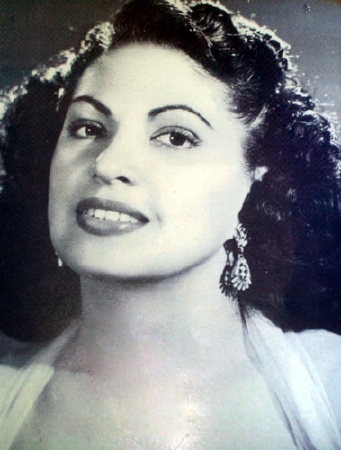 Consuelo Velázquez (August 29, 1924 – January 22, 2005) was a piano prodigy. She became a noted classical concert pianist and a very successful composer and songwriter. Her instrumental interpretation has the formal feel of popular music of the fifties (in America that would be Liberace and numerous formally trained musicians who played the hits as though in a symphony concert).
Consuelo Velázquez (August 29, 1924 – January 22, 2005) was a piano prodigy. She became a noted classical concert pianist and a very successful composer and songwriter. Her instrumental interpretation has the formal feel of popular music of the fifties (in America that would be Liberace and numerous formally trained musicians who played the hits as though in a symphony concert).
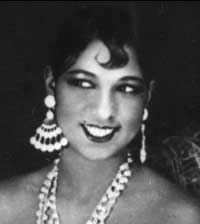 Josephine Baker is a wild card. Known in the United States as the risqué, statuesque, Paris-based sex-vixen of the twenties (famous for bare-breasted poses and the infamous banana dance, i.e. her costume was mainly a banana adorned g-string). This St. Louis-born entertainer spent the majority of her life in exile in France. Even a cursory listen makes clear that sis could sing. In fact, I was surprised to hear an obvious but seldom noted influence: soprano saxophone king and fellow ex-patriot Sidney Bechet. Josephine sounds just like Sidney right down to the vibrato and the swooping phrasing.
Josephine Baker is a wild card. Known in the United States as the risqué, statuesque, Paris-based sex-vixen of the twenties (famous for bare-breasted poses and the infamous banana dance, i.e. her costume was mainly a banana adorned g-string). This St. Louis-born entertainer spent the majority of her life in exile in France. Even a cursory listen makes clear that sis could sing. In fact, I was surprised to hear an obvious but seldom noted influence: soprano saxophone king and fellow ex-patriot Sidney Bechet. Josephine sounds just like Sidney right down to the vibrato and the swooping phrasing.
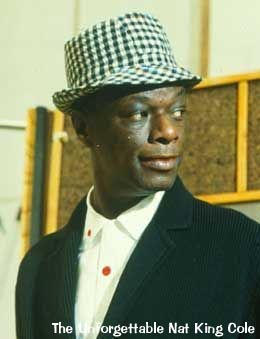 Nat 'King' Cole made a number of albums in Spanish and is insanely popular south of the border. He's up next with a jaunty, bebop-inspired romp complete with an opening vamp. Nat is too much with his superb vocal work. He made cool so exciting. Even uptempo he had such a smooth delivery. Notice this is his famous drum-less, piano, guitar and string bass trio. Rock solid in rhythm and adventurous in harmony. Listen at the brief but intricate piano solo. It’s an outstanding rendition.
Nat 'King' Cole made a number of albums in Spanish and is insanely popular south of the border. He's up next with a jaunty, bebop-inspired romp complete with an opening vamp. Nat is too much with his superb vocal work. He made cool so exciting. Even uptempo he had such a smooth delivery. Notice this is his famous drum-less, piano, guitar and string bass trio. Rock solid in rhythm and adventurous in harmony. Listen at the brief but intricate piano solo. It’s an outstanding rendition.
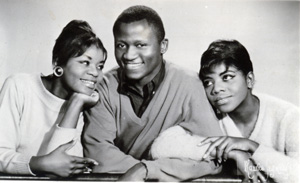 Next we go back in the alley with a Louis Jordan-like arrangement that mimics the big bands of the forties even though it’s just a quartet with a trio of singers on top. The difference is, it’s not just any three singers. It’s Andy and the Bey Sisters (Andy Bey with his sisters Geraldine and Salome). Yes that’s a classic R&B tenor sax wailing over a modified shuffle beat, this is from a 1964 release.
Next we go back in the alley with a Louis Jordan-like arrangement that mimics the big bands of the forties even though it’s just a quartet with a trio of singers on top. The difference is, it’s not just any three singers. It’s Andy and the Bey Sisters (Andy Bey with his sisters Geraldine and Salome). Yes that’s a classic R&B tenor sax wailing over a modified shuffle beat, this is from a 1964 release.
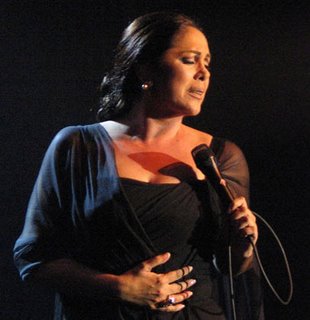 Isabel Pantoja is one of the divas of contemporary Spanish music. You can tell by the way she handles the syllables, rolling her rrrrr’s, singing in a full-throated style that owes a lot to the flamenco influence. Sometimes I think I’m hearing some of that new Cuban stuff but it’s not. But then again, listen to those out choruses with the chanting male voices and the horn flourishes. It’s Cococabana time. I love it.
Isabel Pantoja is one of the divas of contemporary Spanish music. You can tell by the way she handles the syllables, rolling her rrrrr’s, singing in a full-throated style that owes a lot to the flamenco influence. Sometimes I think I’m hearing some of that new Cuban stuff but it’s not. But then again, listen to those out choruses with the chanting male voices and the horn flourishes. It’s Cococabana time. I love it.
 This next group is hard to identify just from listening. They are a duo called the Worldwide Groove Corporation and, believe it or not, they hail from Nashville, Tennessee. Grand Ole Opry, I hardly knew ya. They’ve got that Euro-lounge/café sound down pat: part electronics, part jazz, part retro. On their web page, Ellen Tift and Kurt Goebel describe themselves as “a music production team specializing in programmed pop music.” Although this may not be everyone’s cup of tea, they are good at what they do.
This next group is hard to identify just from listening. They are a duo called the Worldwide Groove Corporation and, believe it or not, they hail from Nashville, Tennessee. Grand Ole Opry, I hardly knew ya. They’ve got that Euro-lounge/café sound down pat: part electronics, part jazz, part retro. On their web page, Ellen Tift and Kurt Goebel describe themselves as “a music production team specializing in programmed pop music.” Although this may not be everyone’s cup of tea, they are good at what they do.
 Lila Downs is one of the most passionate advocates of Mexican music currently active. I like the edge in her music. The arrangement is both classic and cutting edge (notice how she uses dissonances underneath her smooth vocal delivery). She is the daughter of Mexican cabaret singer Anita Sanchez and Scottish/English-American professor of art and cinematographer Allen Downs. She was reared between Mexico and California and graduated from the University of Minnesota in voice and anthropology. Down’s version is from her 1999 album La Sandunga.
Lila Downs is one of the most passionate advocates of Mexican music currently active. I like the edge in her music. The arrangement is both classic and cutting edge (notice how she uses dissonances underneath her smooth vocal delivery). She is the daughter of Mexican cabaret singer Anita Sanchez and Scottish/English-American professor of art and cinematographer Allen Downs. She was reared between Mexico and California and graduated from the University of Minnesota in voice and anthropology. Down’s version is from her 1999 album La Sandunga.
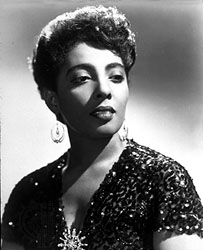 Jazz master Carmen McRae eases in next with a smoldering, lilting Latin dissertation, displaying her formidable chops at making one note do the work of many. It’s all in the way she accents a syllable with her husky voice that is both heavy in insinuations and light in the way she negotiates the rhythms. Along with Carmen is Cal Tjader. The two teamed up for Heatwave, a whole album of songs reinterpreted with a Latin underpinning.
Jazz master Carmen McRae eases in next with a smoldering, lilting Latin dissertation, displaying her formidable chops at making one note do the work of many. It’s all in the way she accents a syllable with her husky voice that is both heavy in insinuations and light in the way she negotiates the rhythms. Along with Carmen is Cal Tjader. The two teamed up for Heatwave, a whole album of songs reinterpreted with a Latin underpinning.
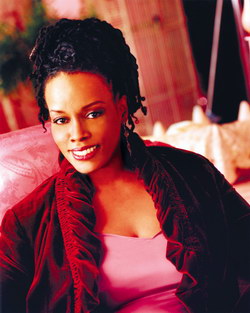 Songtress Dianne Reeves is so distinctive, you immediately know it’s her. Those exquisite long tones, the haunting beauty of her phrasing, the honeyed, unhurried delivery that coos intimacy. Plus, she successfully takes the song in a completely un-Latin direction, which is not easy to do for a song internationally recognized as a Latin classic. That’s Toots Theilman on harmonica.
Songtress Dianne Reeves is so distinctive, you immediately know it’s her. Those exquisite long tones, the haunting beauty of her phrasing, the honeyed, unhurried delivery that coos intimacy. Plus, she successfully takes the song in a completely un-Latin direction, which is not easy to do for a song internationally recognized as a Latin classic. That’s Toots Theilman on harmonica.
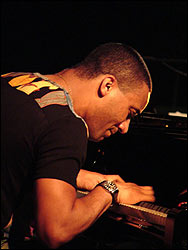 Taking the song even further out is Gonzalo Rubalcaba, the great Cuban pianist who has to be among the top ten contemporary jazz pianists. This meditation is a private investigation, something whispered in the dark. At every turn of phrase he surprises with his harmonic development. He starts out abstractly, barely referring to the famous melody. But just as a flower slowly unfolds, Gonzalo's melody gradually becomes more and more obvious. It’s orchid lovely.
Taking the song even further out is Gonzalo Rubalcaba, the great Cuban pianist who has to be among the top ten contemporary jazz pianists. This meditation is a private investigation, something whispered in the dark. At every turn of phrase he surprises with his harmonic development. He starts out abstractly, barely referring to the famous melody. But just as a flower slowly unfolds, Gonzalo's melody gradually becomes more and more obvious. It’s orchid lovely.
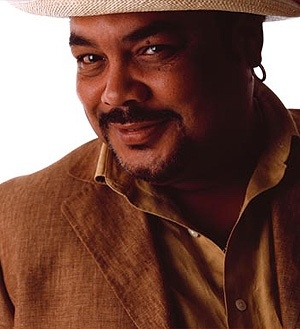 Francisco Cespedes is originally from Cuba but now makes his home in Mexico. This is a personal favorite for me. Cespedes clearly makes this a song of seduction built on a bed of female voices who offer the perfect foundation for his glorious baritone. I think it was a stroke of genius to perform the song sans instrumentation; just the beauty of human voices.
Francisco Cespedes is originally from Cuba but now makes his home in Mexico. This is a personal favorite for me. Cespedes clearly makes this a song of seduction built on a bed of female voices who offer the perfect foundation for his glorious baritone. I think it was a stroke of genius to perform the song sans instrumentation; just the beauty of human voices.
 Rosa Passos is Brazilian. This is the most “romantic” of all the versions. Heavy strings. Light—very light—percussion touches. A lilting, bossa nova-ish guitar, a strong string bass, and a tinkling piano all complement Rosa’s seemingly fragile voice. This is the intimacy of romantic dreaming. This version is a bit sweet for my tastes but it is totally representative of a major current of MPB (the popular music of Brazil).
Rosa Passos is Brazilian. This is the most “romantic” of all the versions. Heavy strings. Light—very light—percussion touches. A lilting, bossa nova-ish guitar, a strong string bass, and a tinkling piano all complement Rosa’s seemingly fragile voice. This is the intimacy of romantic dreaming. This version is a bit sweet for my tastes but it is totally representative of a major current of MPB (the popular music of Brazil).
 Mexican jazz vocalist Iraida offers us the most adventurous interpretation. I could listen to this one over and over. She reminds me of how Coltrane had a penchant for completely redefining popular songs. Iraida is not shy. She digs deep and is willing to fly free, stretching out and re-configuring the song, overlaying an improvisation that is totally new. Those who prefer to hear the melody might find this off-putting but jazz heads love these fanciful flights. What is most amazing is how right on Iraida's jazz chops are.
Mexican jazz vocalist Iraida offers us the most adventurous interpretation. I could listen to this one over and over. She reminds me of how Coltrane had a penchant for completely redefining popular songs. Iraida is not shy. She digs deep and is willing to fly free, stretching out and re-configuring the song, overlaying an improvisation that is totally new. Those who prefer to hear the melody might find this off-putting but jazz heads love these fanciful flights. What is most amazing is how right on Iraida's jazz chops are.
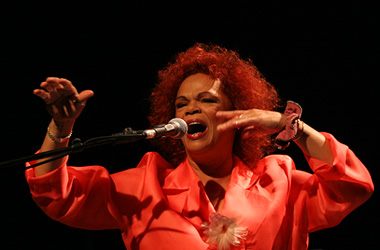 We close with the “wild woman” of Brazilian music, pianist/songtress Tania Maria. It’s hard to pin down all the influences: the jazz chops on the piano, the Brazilian phrasing, the arrangements that include all kinds of African-heritage polyrhythms. In Tania’s hands, the song sounds both familiar and refreshed. Tania Maria brings new life to the old cliché, something old, something new, something borrowed, something blue. She’s got it.
—Kalamu ya Salaam
Whatever they have at hand
Right off the bat, I have to say I was suprised that I liked the Josephine Baker as much as I do. I'm glad I heard it before knowing who it was. If I'd known, all I would've been thinking about was bananas, kitsch and shtick and I wouldn't have actually heard the song. As it was, I dug it a lot. Her voice does indeed sound like a clarinet. Especially on the held notes.
For me, Nat's version is THE classic. It's the one that immediately comes to mind when I hear the song title. This version is one of the most swinging, finger-popping, head-nodding records of all time. It's a laid-back, pre-bebop swinging type of thing that could serve as the definition for 'cool' circa 1950 (or whenever the record was laid down).
After two consecutive winners (or three, counting a nice instrumental version by Consuelo Velázquez herself), we enter choppy waters. I'm an Andy Bey fan, but I'm not feeling him here with his sisters. I'm reminded to much of Manhattan Transfer. Bey and his sisters seem like they're just clowning around or maybe performing for a Broadway show.
I can see why some would like the Isabel Pantoja but it's too dramatic for me. The Spanish are definitely some high drama people and sometimes it's cool, but I'll pass on this one.
I'm amazed by Kalamu's next selection. Worldwide Groove Corporation's electro-lounge cover is exactly the sort of record I'd usually throw into one of these mixes only to get the cold shoulder from Kalamu. It's music made for chilling with friends while cradling a multi-colored cocktail. I'm still deciding if I like it or not. After the shock wears off maybe I'll have an opinion.
Lila is the shit, of course. She has this one record (the title escapes me at the moment...it's in Spanish) that could actually give New Orleans brass bands a run for the money. It's unlikely funkiness is so hip that I might have to post it here one day even though I wouldn't actually consider it black music, stylistically. I like Lila's version of "Bésame," but I'm also aware that she gets a lot deeper and more soulful than this.
Carmen and Cal's version probably has the nicest arrangement. The problem is, Carmen's Spanish-language pronunciation is really bad. I wish she was singing the English lyrics. The way she mangles the words is quite distracting. Too bad because I love her voice and phrasing and Cal is swinging lovely.
Dianne's accent is decidely better. She also breaks into the English lyrics from the second verse on. At first I was undecided but I eventually gave in. Like Kalamu said, this is a torch song/jazz ballad interpretation, not Latin at all, but I like it.
Yeah, the Gonzalo is on point. That's some good night music. It's the kind of track you can either pay attention to and really follow the exploration or just lay back and let it calm and soothe you. Good find.
I can't say Francisco Cespedes' version is my favorite, but it is the most interesting. The arrangment provides an excellent contrast between Francisco's sandpapery baritone and the smooth, sweet sound of the ladies.
I like Rosa Passos. The album this song comes from, Amorosa, includes a number of elegant covers, including a nice take on the Jobim classic "Wave." Sort of like a Brazilian Diana Krall, Rosa's music doesn't blow me away, but I almost always at least like it.
To close, we have the jazz versions by Tania Maria and Iraida. I wouldn't choose either one of them to listen to all the time but I enjoy hearing the chances they take with the music. I like the way they use the song as a basis for musical exploration rather than as a text from which not to deviate.
Overall, this is another one of Kalamu's amazingly broad sweeps across countries, styles and genres using just one song as his vehicle. You wouldn't think a composition as easily identifiable as "Bésame Mucho" would lend itself to such a wide range of interpretation, but then, that's the beauty of black music. The musicians have learned to use whatever they have at hand—in this case, a bolero written by a teenaged piano prodigy from Mexico—to create unique musical statements of their own.
—Mtume ya Salaam
P.S. Why isn't Consuelo's name Consuela? Just wondering.
We close with the “wild woman” of Brazilian music, pianist/songtress Tania Maria. It’s hard to pin down all the influences: the jazz chops on the piano, the Brazilian phrasing, the arrangements that include all kinds of African-heritage polyrhythms. In Tania’s hands, the song sounds both familiar and refreshed. Tania Maria brings new life to the old cliché, something old, something new, something borrowed, something blue. She’s got it.
—Kalamu ya Salaam
Whatever they have at hand
Right off the bat, I have to say I was suprised that I liked the Josephine Baker as much as I do. I'm glad I heard it before knowing who it was. If I'd known, all I would've been thinking about was bananas, kitsch and shtick and I wouldn't have actually heard the song. As it was, I dug it a lot. Her voice does indeed sound like a clarinet. Especially on the held notes.
For me, Nat's version is THE classic. It's the one that immediately comes to mind when I hear the song title. This version is one of the most swinging, finger-popping, head-nodding records of all time. It's a laid-back, pre-bebop swinging type of thing that could serve as the definition for 'cool' circa 1950 (or whenever the record was laid down).
After two consecutive winners (or three, counting a nice instrumental version by Consuelo Velázquez herself), we enter choppy waters. I'm an Andy Bey fan, but I'm not feeling him here with his sisters. I'm reminded to much of Manhattan Transfer. Bey and his sisters seem like they're just clowning around or maybe performing for a Broadway show.
I can see why some would like the Isabel Pantoja but it's too dramatic for me. The Spanish are definitely some high drama people and sometimes it's cool, but I'll pass on this one.
I'm amazed by Kalamu's next selection. Worldwide Groove Corporation's electro-lounge cover is exactly the sort of record I'd usually throw into one of these mixes only to get the cold shoulder from Kalamu. It's music made for chilling with friends while cradling a multi-colored cocktail. I'm still deciding if I like it or not. After the shock wears off maybe I'll have an opinion.
Lila is the shit, of course. She has this one record (the title escapes me at the moment...it's in Spanish) that could actually give New Orleans brass bands a run for the money. It's unlikely funkiness is so hip that I might have to post it here one day even though I wouldn't actually consider it black music, stylistically. I like Lila's version of "Bésame," but I'm also aware that she gets a lot deeper and more soulful than this.
Carmen and Cal's version probably has the nicest arrangement. The problem is, Carmen's Spanish-language pronunciation is really bad. I wish she was singing the English lyrics. The way she mangles the words is quite distracting. Too bad because I love her voice and phrasing and Cal is swinging lovely.
Dianne's accent is decidely better. She also breaks into the English lyrics from the second verse on. At first I was undecided but I eventually gave in. Like Kalamu said, this is a torch song/jazz ballad interpretation, not Latin at all, but I like it.
Yeah, the Gonzalo is on point. That's some good night music. It's the kind of track you can either pay attention to and really follow the exploration or just lay back and let it calm and soothe you. Good find.
I can't say Francisco Cespedes' version is my favorite, but it is the most interesting. The arrangment provides an excellent contrast between Francisco's sandpapery baritone and the smooth, sweet sound of the ladies.
I like Rosa Passos. The album this song comes from, Amorosa, includes a number of elegant covers, including a nice take on the Jobim classic "Wave." Sort of like a Brazilian Diana Krall, Rosa's music doesn't blow me away, but I almost always at least like it.
To close, we have the jazz versions by Tania Maria and Iraida. I wouldn't choose either one of them to listen to all the time but I enjoy hearing the chances they take with the music. I like the way they use the song as a basis for musical exploration rather than as a text from which not to deviate.
Overall, this is another one of Kalamu's amazingly broad sweeps across countries, styles and genres using just one song as his vehicle. You wouldn't think a composition as easily identifiable as "Bésame Mucho" would lend itself to such a wide range of interpretation, but then, that's the beauty of black music. The musicians have learned to use whatever they have at hand—in this case, a bolero written by a teenaged piano prodigy from Mexico—to create unique musical statements of their own.
—Mtume ya Salaam
P.S. Why isn't Consuelo's name Consuela? Just wondering.
This entry was posted on Monday, March 3rd, 2008 at 1:49 am and is filed under Cover. You can follow any responses to this entry through the RSS 2.0 feed. You can leave a response, or trackback from your own site.
One Response to “FRANCISCO CESPEDES / “Bésame Mucho””
March 4th, 2008 at 2:09 am
One more version of Besame by the great Venezuelan singer Maria Marquez (based in the SF Bay Area), from the album Princesa de la Naturaleza.
Leave a Reply
| top |